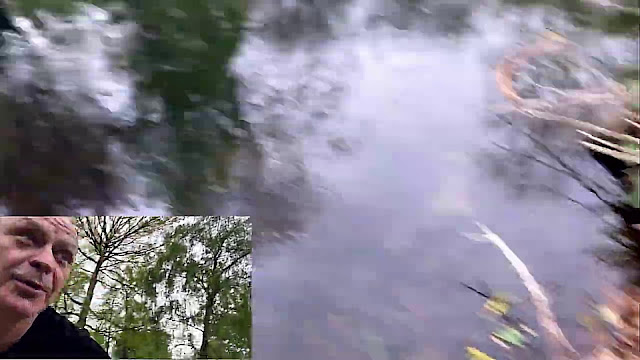May 4th, 2021
I went to Central Park of NYC looking for duckweed.
You can see the whole adventure in a previously published video (check the link in the description).
Wild plants always come with wild critters and different bacteria.
Some of them are harmless, some are beneficial and some could be harmful.
So, we have to quarantine it in a separate nursery first.
I do it with all new stuff regardless of where it comes from - friends, pet stores, or wild ponds.
The nursery could be any small tank or a jar with a cover.
Put the sample into the jar and add dechlorinated water.
Cover it loosely to allow some air in and out.
At first glance, I noticed pouches of eggs that look like bladder snails eggs that I got before.
And there are strings of filamentous algae that I don't want in my aquariums now.
In the following days, I observe young bladder snails.
It takes a couple weeks for bladder snails to hatch from the eggs.
In the following weeks, I spotted copepods (cyclops), seed shrimp, and daphnia.
One has to use a magnifying glass and... be patient to see them.
Also, phone cameras have decent zoom in...
I often use my iPhone for making time-lapse recordings.
That is a great way to see slow moving critters.
Here you can see a seed shrimp and a couple cyclopes.
Those critters can be identified easily by the way they move around.
Seed shrimp move around like drunk bees.
Here you can see a seed shrimp.
Seed shrimp are one of the best cleaning critters to keep in aquariums.
Small fish (guppies) eat seed shrimp.
And this looks like a nematode to me.
My guppies eat nematodes faster than nematodes can breed.
For that reason, I could not culture nematodes in aquariums with fish.
This season I am busy farming blackworms - they seems to be more promising for my purposes.
Here is a clear view of a copepod carrying eggs.
I use a macro lens to get this close view.
It allows a view of even the inner parts.
That's so cool!
I add copepods into aquariums with guppy fry every Summer.
My fish eat them fast.
And here is a daphnia.
It is another tiny algae eater my guppies feed on.
This one carries eggs you can see.
I love my macro lens for the view it allows me to get.
Okay. So, after a couple weeks of observations I am ready to culture critters.
I use a pipette to transfer critters that I like into a glass cup.
To start a new colony from wild critters, the number of critters is not as important as getting only the critters that you want.
Look thoroughly at the critter in the glass.
Here I choose only daphnia and copepods.
Remove any unwanted critters.
And after that we can move the critters into a new tank.
In this example, I put daphnia and copepods into a 1 liter aquarium garden with Ramshorn snails.
That is where I am going to culture them.
Notice - this is a sustainable aquarium garden.
Critters in sustainable aquarium gardens feed on what grows in the aquariums.
Additional feeding helps boost colony growth.
Daphnia, copepods, and many other critters feed on common green algae.
Let's inject a couple spoons of green algae water I cultivated for this purpose into a tiny nursery.
Alternatively, you can add water from your aquarium with fish.
It will boost algae growth.
Or you can add a small pinch of any fish food or some dried leaves.
That's all it takes to boost algae growth.
It takes time for a colony of any critters to grow.
The larger the aquarium the more time it takes for a colony to grow.
Here you can see a 3 liter aquarium garden with my dwarf guppies.
Guppy fry are waiting for food.
I use a turkey baster to collect critters from the nursery.
Whatever critters get sucked in go into the aquarium with fish.
Fish will hunt them down.
Guppy fry love to go after daphnia and such.
Let's make a couple more injections.
Critters that survive will breed right in this aquarium providing more food for the fish.
Though in my experience, daphnia and copepods get eaten by fry rather fast.
For that reason, we have to breed daphnia and copepods in aquariums without fish.
Here you can see guppy fry on a hunt - the game is on!
Now let's refill the nursery with water to the level.
In this example, I use water from the aquarium which is great for feeding critters.
So, that is how I culture wild critters to feed my fish.
Also, you may notice that the big mama fish stays on the bottom.
She is looking for larger live food - blackworms.
Well, that is a topic for another video.
Have fun and happy fish :)
























































No comments:
Post a Comment